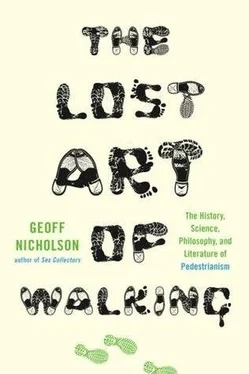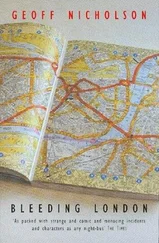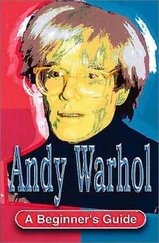The British media only got interested in it when he did the Land’s End to John o’ Groat’s walk for the second time and took his naked girlfriend, Melanie Roberts, with him. He also had a film crew with him. Cynics might think that without the naked girlfriend there might not have been a film crew.
The resulting documentary, made by Richard Macer, shows the British public’s surprisingly extreme reactions to the naked pair, both positive and negative. Gough encounters a number of people who regard him as a harmless, likable, even admirable eccentric, part of a great British tradition, which is surely the only sensible way to regard him. This includes a group of women he encounters in a pub in Derbyshire who strip down to their underwear in a show of solidarity. By contrast, a working-class mother is shown seething with rage and disgust, afraid that the sight of a naked man and woman will have some hideously damaging effect on her innocent children. Her reaction is alarmingly, frighteningly extreme.
I wonder what the modern media might have made of the Old Leatherman, a nineteenth-century tramp who for just over thirty years, from 1858 to 1889, was in constant motion, dressed head to foot in leather, walking a three-hundred-mile circuit around parts of Connecticut and New York State. The route took him precisely thirty-four days: you could set your watch by him. In those three decades of walking he wasn’t heard to utter a single intelligible word.
In fact, the media of the time did give the Old Leatherman a certain amount of attention. He was regularly photographed, and his image appeared on commercially available postcards. He was also invited to display himself in a New York City freak show, an opportunity he wisely declined. His reputation as an eccentric walker surely could not have survived long periods as a sedentary museum exhibit.
As for who the Leatherman was and why he walked, the best story we have, and best doesn’t mean truest, is that he began life as Jules Bourglay (spellings differ) in Lyons, France. He was a young woodcarver, who fell in love above his station with the daughter of a wealthy leather merchant, surname Laron.
Bourglay asked for the girl’s hand in marriage and Laron pere didn’t say yes, but he didn’t dismiss the idea out of hand. He gave Bourglay a job in his leather business. If the young man proved himself in the course of the first year, he’d keep him on and approve the marriage.
The move was a disaster. The leather business was in trouble, and Bourglay made some bad decisions, buying leather at high prices just as the market value was going down. The decisions were so bad that Laron went bankrupt and lost his business. The wedding, understandably, was off. Devastated, Bourglay spent a year in a French monastery, then made his way to America, where he tried to expiate his guilt by walking.
That sounds thoroughly eccentric to me, and of course it may be untrue, but even as a myth from a different age it’s interesting that the story was thought of as a reasonable explanation for why a man might walk regular three-hundred-mile circuits while dressed in full leather. Perhaps once eccentricity is understood it is no longer considered eccentric at all. So what is it that defines a walk and a walker as eccentric?
♦
I once worked for a security company that provided guards for many of London’s major art institutions, including the British Museum, the Royal Academy, and the Tate Gallery. My job was simple enough, to protect works of art from the public, and a basic level of vigilance was all that was required of me. But I did have to stay literally on my feet, and metaphorically on my toes, and so whole days, and eventually weeks and months, were spent pacing up and down one gallery or another trying to remain alert, looking at art, keeping an eye on the potentially troublesome public. Sometimes I fantasized about where my endless pacing might have taken me had I actually been going somewhere. But, of course, I wasn’t being paid to go anywhere: I was being paid to walk back and forth.
Some of my colleagues in the museums and galleries complained about the boredom and the pain in their feet, but I never found this a problem. Long periods of time spent in the presence of a work of art, almost any bona-fide work of art, created rare and wonderful experiences, and that made it all worthwhile.
There was a moment in the Royal Academy, before it opened for the day, when I found myself alone in a gallery surrounded by thirty or so priceless Van Goghs, part of an exhibition on Post-Impressionism. As I walked up and down, waiting for the public to be let in, it was easy to entertain other fantasies: that the Van Goghs belonged to me, that I was some sort of James Bond villain who’d secreted these treasures, that I was walking in my own marble hall, a secret lair that was mine and mine alone and no others would ever be allowed to walk there. Then the doors opened and hundreds of art lovers wandered in.
It was easier to sustain the fantasy in a basement gallery at the Tate, where few people came, and where I was guarding a sculpture by Richard Long called Slate Circle . It consisted of 214 rough, largish, unworked pieces of Welsh slate, arranged on the floor in a precise circle about twenty feet in diameter. Guarding it wasn’t much of a challenge. It was unlikely that anyone was going to slip a large lump of Welsh slate under their coat. Few visitors came to that particular room, and when they did, they had a tendency to ask, ‘Is this the bricks?’ meaning Carl Andre’s Equivalent VIII , made from, and consisting of, 120 firebricks, which to this day remains an exciting touchstone for art skeptics and philistines everywhere. I was delighted to be able to say, ‘No, it’s not the bricks. It’s the stones’.
Long’s Slate Circle explores a tension between art and nature, the indoors and the outdoors, between the created and the found object, between the making of art and the claiming of what’s there. It was undoubtedly a sculpture, but the slate had not been ‘sculpted’ in any conventional sense — it had simply been arranged. Two hundred fourteen lumps of slate had been extracted from the ground and carefully, artfully placed on the floor in the warm glow of an art gallery, where I could see and walk around them. They made my days of pacing very happy.
There were certain ironies in the artwork that I only became aware of later. The slate, I discovered, came from a quarry that Richard Long had gone past while walking, ‘From the source of the River Severn to the summit of Snowdon, 60 miles’. That was the description of his walk and also the title of one of his works of art. Long is a sculptor and a conceptual artist, and has said that walking is the real medium of his art.
His first walking piece was made in 1967, a straight line in a field of grass, created by his pacing up and down until the grass was flattened and the line was made visible: one of those works of art that any damn fool could make if the damn fool were a conceptual artist. Later, Long’s works became larger and more ambitious. Sometimes they involved the stamping out of patterns in earth or ash, sometimes the rearrangement of rocks along the way, sometimes ‘painting’ with water in the course of the walk. Long even collected mud from the area where he’d been walking and used it to create works on the walls or floors of art galleries.
Some of his walks have been lengthy and arduous, across the Sierra Nevada, through the Sahara. The works have titles such as Walking a Circle in Mist, A Walking and Running Circle, A Cloudless Walk, A Walk Across Ireland, A Line of 33 Stones, A Walk of 33 Days . He documents the walks with maps, drawings, photographs, texts, or a combination of these things. Some of these works are wonderfully inscrutable, consisting of no more than a few words. Here, in its entirety, is a piece called A FIVE DAY WALK :
Читать дальше












